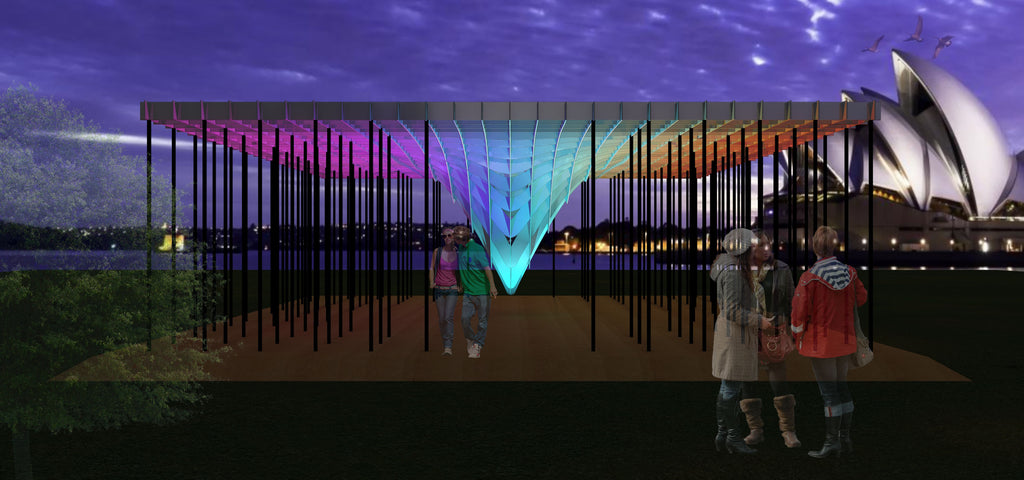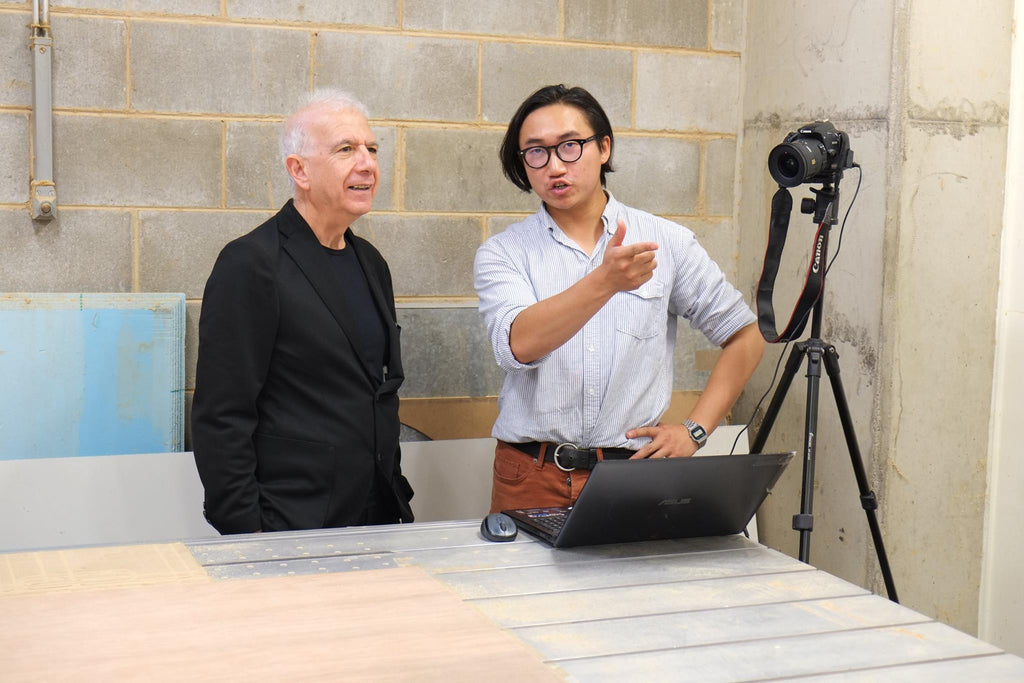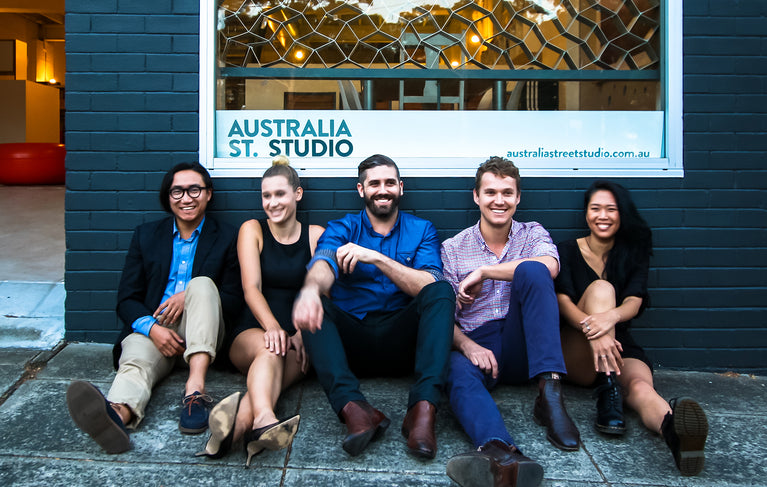HOW DESIGN WORKS
With KOPA's founders having a background in Architecture & Design. We wanted to share what KOPA stands for. We're starting this new series of Design Reviews, which will examine projects and break down the creative thinking along with what steps were taken to realize these projects.
If you've ever wondered what goes into designing a building, a sofa or brochure, this series will provide you with some insights into the process of design. From a sketch on a piece of paper to the end product, a lot goes into creativity no matter how big or small. We hope you enjoy this series and that it would inspire some of our KOPA readers with their creative journey.
BEGINNINGS
Besides KOPA, a few years back Jason & Joseph started a design collaborative Insitu Collaborative which is a group of like-minded creatives looking to research & develop, disrupt and challenge the status quo in the world of design.
One of their projects was CONFLUENCE. An architectural pavilion which represented the past and the future. It was to remind people of the present as the sinuous structure came to a point in the centre.
They challenged themselves furthermore, to see if they could design and re-purpose this pavilion, for future exhibitions and tried gave themselves material limits to ensure this pavilion could be built as sustainable and with minimal waste.
The result can be viewed in the video below. Please read further to see the journey.
CONCEPT
Everything starts with a concept, a quick sketch on a napkin or doodle. It doesn't matter how you get creative, what's important is how you communicate that vision from your mind into reality. Jason was never a great sketch artist so he used writing as a medium to describe what he was seeing in his head. That was how confluence came about, with the combined creative skills of Joe, they translated their vision into an executable set of diagrams.
It doesn't matter how you do it, so long as you find an effective method to communicate ideas. Riwan Javaid explains how he uses writing to design here.

3D - VISUALISATIONS
Technology is improving, and to help better understand what it is they are dealing with, 3D visualisation software or CAD programs help in so many different ways. That said, the team holds firm that these are simply tools. They are an extension of the artists' paintbrush or the mechanics' wrench. Even though whole courses are built towards understanding software like 3DS MAX or REVIT (For you architects out there), they are "TOOLS" to help you visualise. You still need to create yourself.
A point of advice to young designers out there. Don't ever let your software determine your creative limits.


RECORD YOUR STORY
Recording your progress helps with understanding the processes and procedures you are putting in place. It helps with turning your design vision into a critiquing process. What worked well, and more importantly what failed.
KOPA always records as much as they can, to better ensure design quality. You'll also find this helps with creating content afterwards and builds a story. It's important to have a story in place. Your ideas may be good, but how do you narrate it so other people see your vision as well.

KIT OF PARTS
Specifically for Confluence, a strong focus on the theory of "Kit of Parts" was at the centre of this project. KOPA has always believed in the application of object-oriented building techniques, where building components are pre-designed / pre-engineered / pre-fabricated for inclusion in joint-based (linear element), panel-based (planar element), module-based (solid element), and deploy-able (time element) construction systems.
PROTOTYPING
Testing or prototyping is vital in any new product that you want to develop. For Confluence, multiple tests were run in connection joints along with ensuring all the pieces fit in place. For KOPA products, tests on durability, stress, connections along with quality are all considered. Whatever it is you are creating, whether it's artwork or a chair. Always prototype. It helps you understand the real-world functionalities and potential results you are dealing with. Around 40% of KOPA's time is put in R&D & Prototyping.

Besides the structure for Confluence, ensuring the correct lighting used was fit for purpose Philips lighting was kind enough to assist in sponsoring the required luminaires needed along with any technical challenge we face.

CNC
Once early prototypes have been approved and any issues with the design were ironed out, it was time to get some CNC routing done. With the help and sponsorship of the University of Canberra, the team went about CNC routing 54 Marine plywood panels. The project using "Kit of parts" design theory was able to minimise material waste.


INSTALLATION
Assembling the structure on-site, is a task on its own, having a great execution strategy along with relevant checklists means minimal surprises on site. From experience, we cannot stress the importance of ensuring an organised site. Marking out specific locations for tools, equipment and supplies will ensure everyone knows exactly where everything is. Getting everyone to putting it back is a challenge in itself.
That said, problems will occur. For this specific project, footings which were previously signed off by the engineer became obsolete.
Due to the prominent location, the team were forbidden to dig deeper than 15cm. A solution was agreed upon which resulted in pegging the structure in the ground. All fears where quickly alleviated, as cross bracing within the design of the structure, meant it would sit firm. Good design pays off.



COMPLETION
Upon completion of Confluence, the pavilion received positive feedback, and the most important was seeing the public's reaction to this unique pavilion.
In the end, the following was used:
- 54 Marine plywood panels, with minimal wastage
- 496 M6 Hex Screw bolts, we ordered 498
- 24 Hours on a CNC Router
- 2 Days to install.
Confluence was one of the defining projects which helped push Jason and Josephs design ethos. The ability to create a unique structure using minimal resources stayed fundamental in their belief that good design means shouldn't be excessive, and good design should hold its own.
If you've read this far, it means you're keen on design. We hope we can keep you up to date in future with design movements & stories from around the world.
Here at KOPA we want to promote creativity, along with brilliant minds, we certainly hope you'll continue along with us on this journey.




